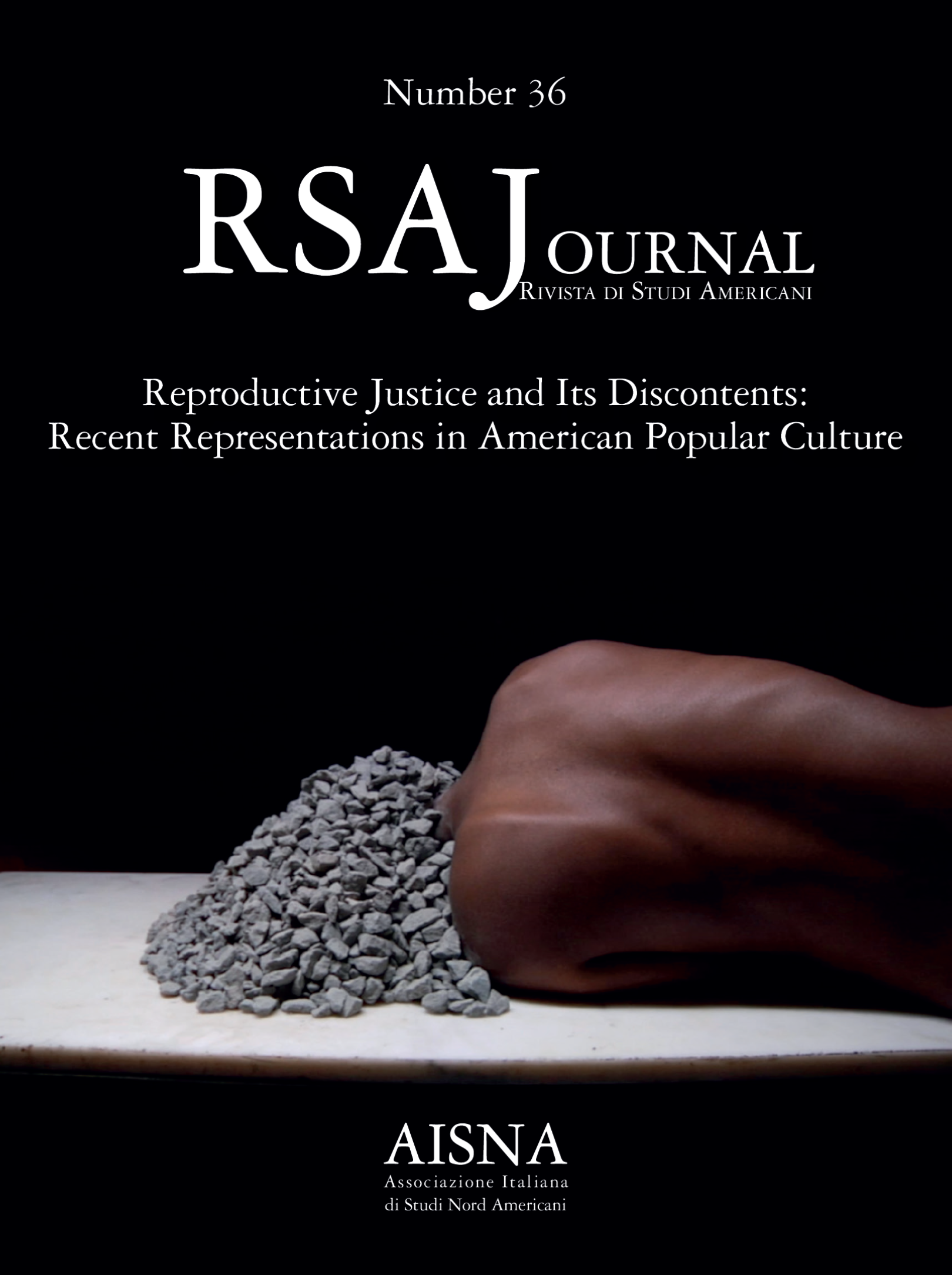Editor's Note
DOI:
https://doi.org/10.13135/1592-4467/12467Keywords:
Editor's noteAbstract
Issue n. 36 (2025) of RSAJournal features a Special Section on reproductive justice in the United States, edited by Cristina Di Maio and Fulvia Sarnelli. Framed by the post-Dobbs v. Jackson Women’s Health Organization (2022) landscape, the section examines not only legal and healthcare repercussions but also the cultural and symbolic dimensions of this pivotal shift, from pronatalist rhetoric to popular culture as an ideological battleground. Drawing on the reproductive justice framework developed by African American activists in the 1990s, the opening interview with Loretta Ross – co-author of one of the movement’s foundational texts – provides the interpretive key to the section, positioning popular culture as a strategic space for resistance and the imagination of alternative futures. The contributions explore diverse genres and media: historical fiction on forced sterilization, a bestselling novel prompting a redefinition of life and autonomy, screen portrayals of breastfeeding, the evolution of the teen
abortion road trip movie, male stand-up comedy’s engagement with abortion, and political strategies to involve men in reproductive rights debates.
The Articles Section presents essays on Louis Adamic’s influence on Carlos Bulosan’s immigrant autobiography (Enrico Mariani), the global ramifications of the Thirteenth Amendment’s 160th anniversary (Don H. Doyle), and Henry Charles Carey’s political economy and gender hierarchies (Matteo Rossi).
The Forum Section, edited by Alessandra Bitumi and Matteo Pretelli, marks the 80th anniversary of the end of World War II. Seven leading historians reassess the war’s memory, global impact, and contested legacies, questioning the durability of the post-1945 liberal order amid current geopolitical shifts.
The First Editions Section, edited by Tess Chakkalakal, introduces William Belmont Parker’s reader’s report on Charles W. Chesnutt’s The Marrow of Tradition (1901), contextualizing its historical, literary, and editorial significance in confronting Jim Crow’s color line. This is the first digital-only issue of RSAJournal, now entirely Open Access and indexed in major academic databases.
Downloads
Published
Issue
Section
License
Copyright (c) 2025 Andrea Carosso

This work is licensed under a Creative Commons Attribution-NonCommercial-NoDerivatives 4.0 International License.
RSAJournal applies a CC BY-NC-ND license to all its contributions. This license enables reusers to copy and distribute the material in any medium or format in unadapted form only, for noncommercial purposes only, and only so long as attribution is given to the creator. CC BY-NC-ND includes the following elements:
- BY: credit must be given to the creator.
- NC: Only noncommercial uses of the work are permitted.
- ND: No derivatives or adaptations of the work are permitted.
Authors who publish with this journal agree to the following terms:
- Authors retain the copyright and full publishing rights for their submissions to the journal.
- Authors grant the journal right of first publication with the work simultaneously licensed under a Creative Commons Attribution-NonCommercial-NoDerivatives 4.0 International License that allows others to share unedited work for non-commercial purposes with an acknowledgement of the work's authorship and initial publication in this journal.
- Authors are able to enter into separate, additional contractual arrangements for the non-exclusive distribution of the journal's published version of the work (e.g., post it to an institutional repository or publish it in a book), with an acknowledgement of its initial publication in this journal.




